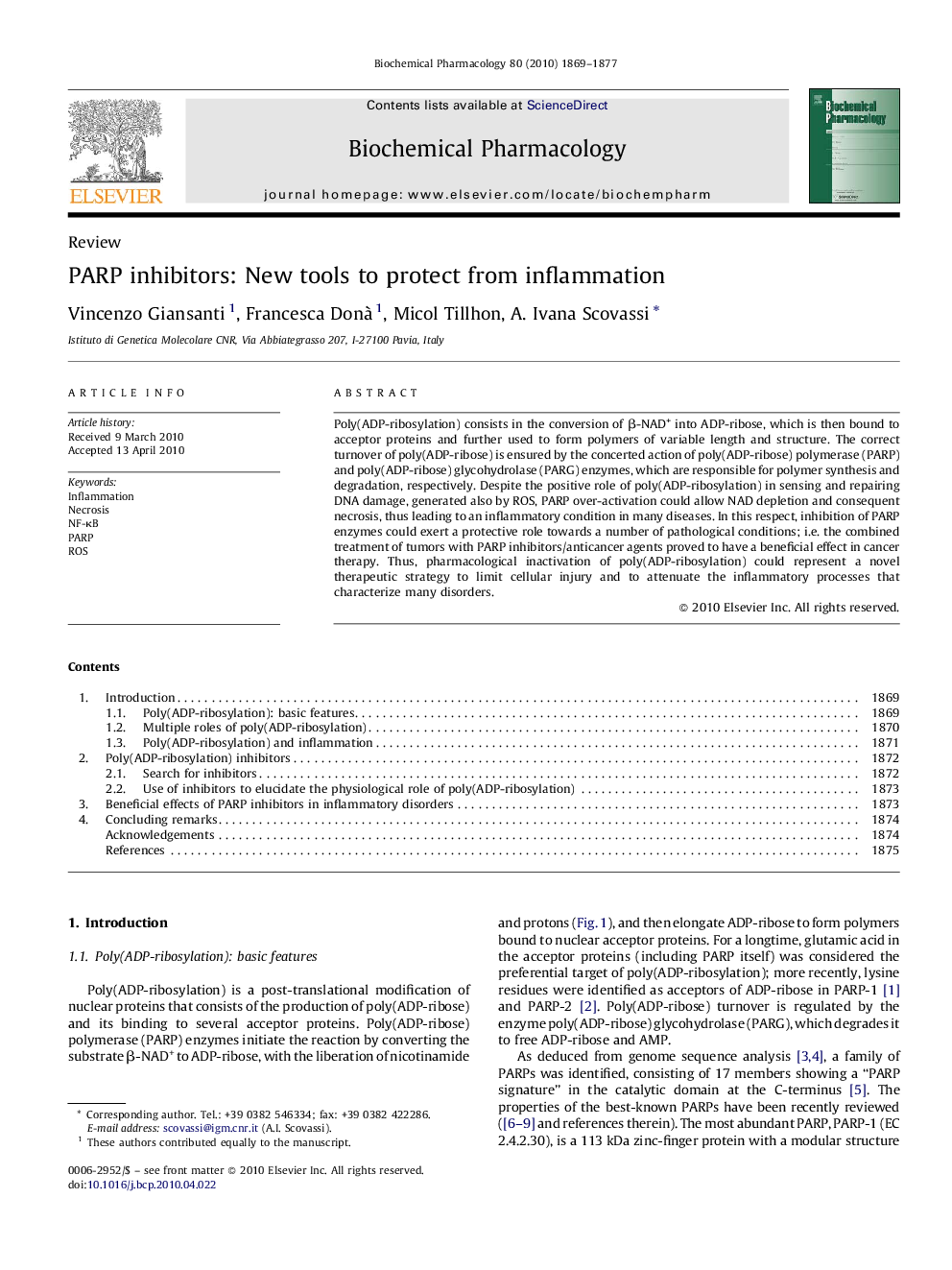| Article ID | Journal | Published Year | Pages | File Type |
|---|---|---|---|---|
| 2513249 | Biochemical Pharmacology | 2010 | 9 Pages |
Poly(ADP-ribosylation) consists in the conversion of β-NAD+ into ADP-ribose, which is then bound to acceptor proteins and further used to form polymers of variable length and structure. The correct turnover of poly(ADP-ribose) is ensured by the concerted action of poly(ADP-ribose) polymerase (PARP) and poly(ADP-ribose) glycohydrolase (PARG) enzymes, which are responsible for polymer synthesis and degradation, respectively. Despite the positive role of poly(ADP-ribosylation) in sensing and repairing DNA damage, generated also by ROS, PARP over-activation could allow NAD depletion and consequent necrosis, thus leading to an inflammatory condition in many diseases. In this respect, inhibition of PARP enzymes could exert a protective role towards a number of pathological conditions; i.e. the combined treatment of tumors with PARP inhibitors/anticancer agents proved to have a beneficial effect in cancer therapy. Thus, pharmacological inactivation of poly(ADP-ribosylation) could represent a novel therapeutic strategy to limit cellular injury and to attenuate the inflammatory processes that characterize many disorders.
Graphical abstractFigure optionsDownload full-size imageDownload as PowerPoint slide
